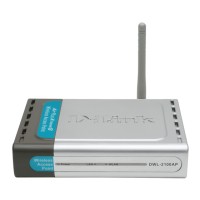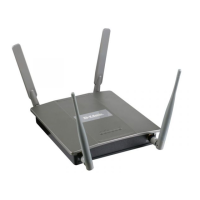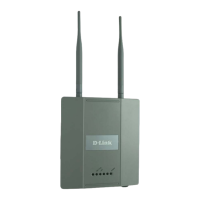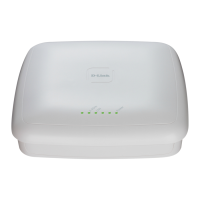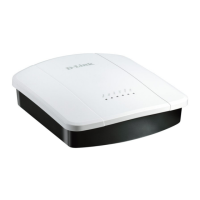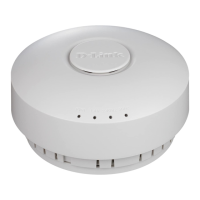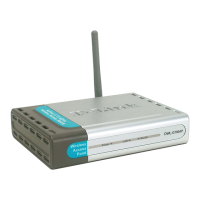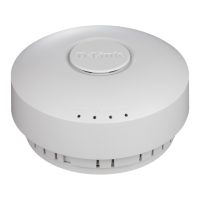




Do you have a question about the D-Link DWL-6600AP and is the answer not in the manual?
| 2.4 GHz | Yes |
|---|---|
| Networking standards | IEEE 802.11a, IEEE 802.11b, IEEE 802.11g, IEEE 802.11n, IEEE 802.3, IEEE 802.3ab, IEEE 802.3af, IEEE 802.3u |
| Ethernet LAN data rates | 10, 100, 1000 Mbit/s |
| Maximum data transfer rate | 450 Mbit/s |
| Power consumption (typical) | 9.6 W |
| Internal | No |
| Placement | Ceiling, Wall |
| Certification | FCC Class B, CE Class B, C-Tick |
| Product color | Gray |
| Operating temperature (T-T) | 0 - 40 °C |
| Operating relative humidity (H-H) | 10 - 90 % |
| WAN connection | Ethernet (RJ-45) |
| USB 2.0 ports quantity | 0 |
| Ethernet LAN (RJ-45) ports | 2 |
| Security algorithms | 64-bit WEP, 128-bit WEP, WPA, WPA2 |
| Depth | 77.5 mm |
|---|---|
| Width | 156 mm |
| Height | - mm |
| Weight | 500 g |
Details initial network connection setup for remote management via Telnet, Web, or SNMP.
Covers the switch power-on process, POST, and boot menu options for special procedures.
Explains management methods: Web GUI, CLI, and SNMP, focusing on accessing the Web interface.
Covers general device information like system name, location, contact, and IP address settings.
Guides on configuring network interface parameters: IP addressing, subnet masks, and default gateways.
Details managing user accounts, setting passwords, and configuring authentication lists for access control.
Covers configuration and viewing of buffered logs, command logs, console logs, and event logs.
Procedures for resetting the system configuration and passwords to factory default values.
Details on downloading firmware, uploading files via TFTP, HTTP file downloads, and image management.
Guides through VLAN configuration, port assignment, tagging behavior, and IP subnet-based VLANs.
Details on enabling IEEE 802.1s Multiple Spanning Tree (MST) protocol, CST, and port configurations.
Explains the security feature for monitoring DHCP messages, building a bindings database, and configuring VLANs.
Covers enabling routing, configuring interface IP addresses, and managing routing tables and discovery.
Details on enabling and configuring or disabling RIP in Global mode, interface settings, and route redistribution.
Guides on configuring VLAN Routing interfaces to support traffic on a VLAN as a router port.
Covers queueing features, 802.1p priority mapping, trust mode, and IP DSCP mapping.
Details DiffServ support for classifying traffic, creating policies, and applying them to interfaces.
Enables prioritization of VoIP traffic by matching streams to the highest CoS queue for better QoS.
Defines classification actions and rules for specific ports based on IP addresses, protocols, and packet criteria.
Allows definition of rules for MAC-based ACLs, associating MAC addresses with VLANs and ports.
Enables per-port security by allowing only specific MAC addresses to be forwarded, discarding others.
Allows blocking network access until user verification is established for wired and wireless clients.
Configuration for Remote Authorization Dial-In User Service servers for centralized authentication.
Manages 802.1X port-based authentication, specifying authenticator, supplicant, and authentication server roles.
Details the components of the system, including the switch, access points, and cluster management.
Provides information on wireless network status, including APs, clients, peer switches, and RF scan data.
Covers global wireless settings, discovery, default AP profiles, and Valid AP database configuration.
Includes features for resetting APs, RF management, software downloads, and AP provisioning.


